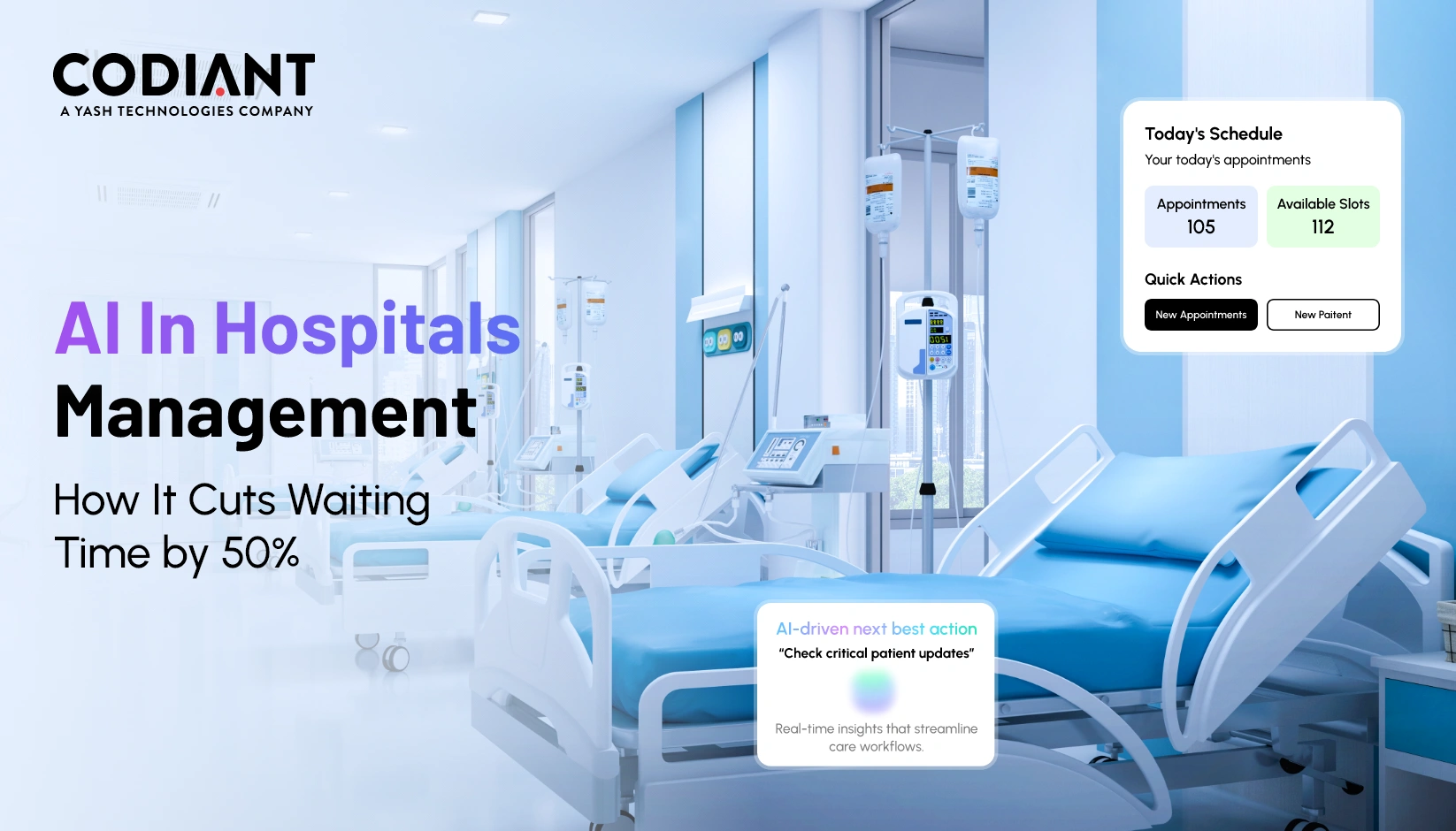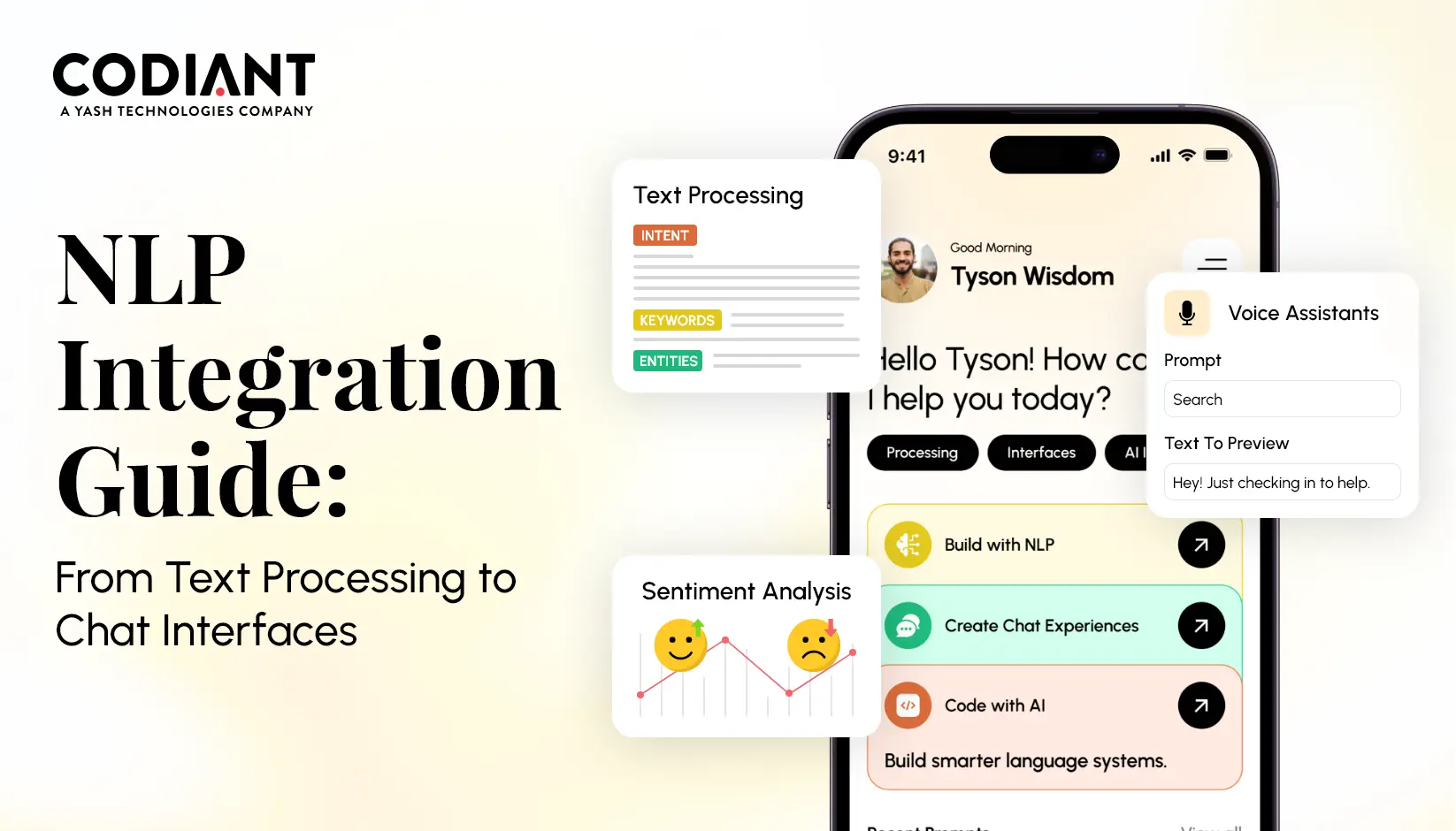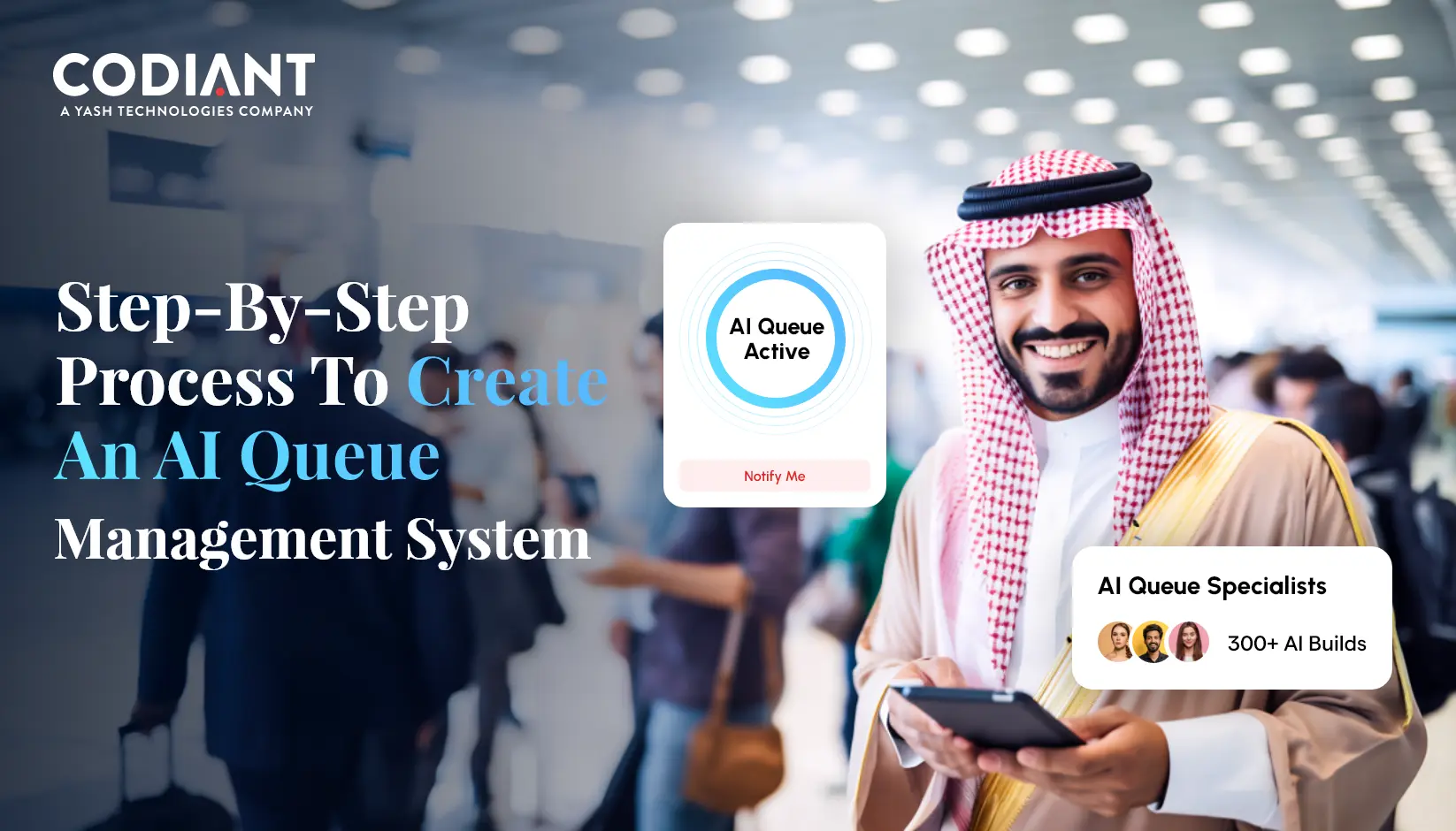Generative AI in Digital Product Development: Powerful Use Cases and Benefits
Table of Contents
Subscribe To Our Newsletter
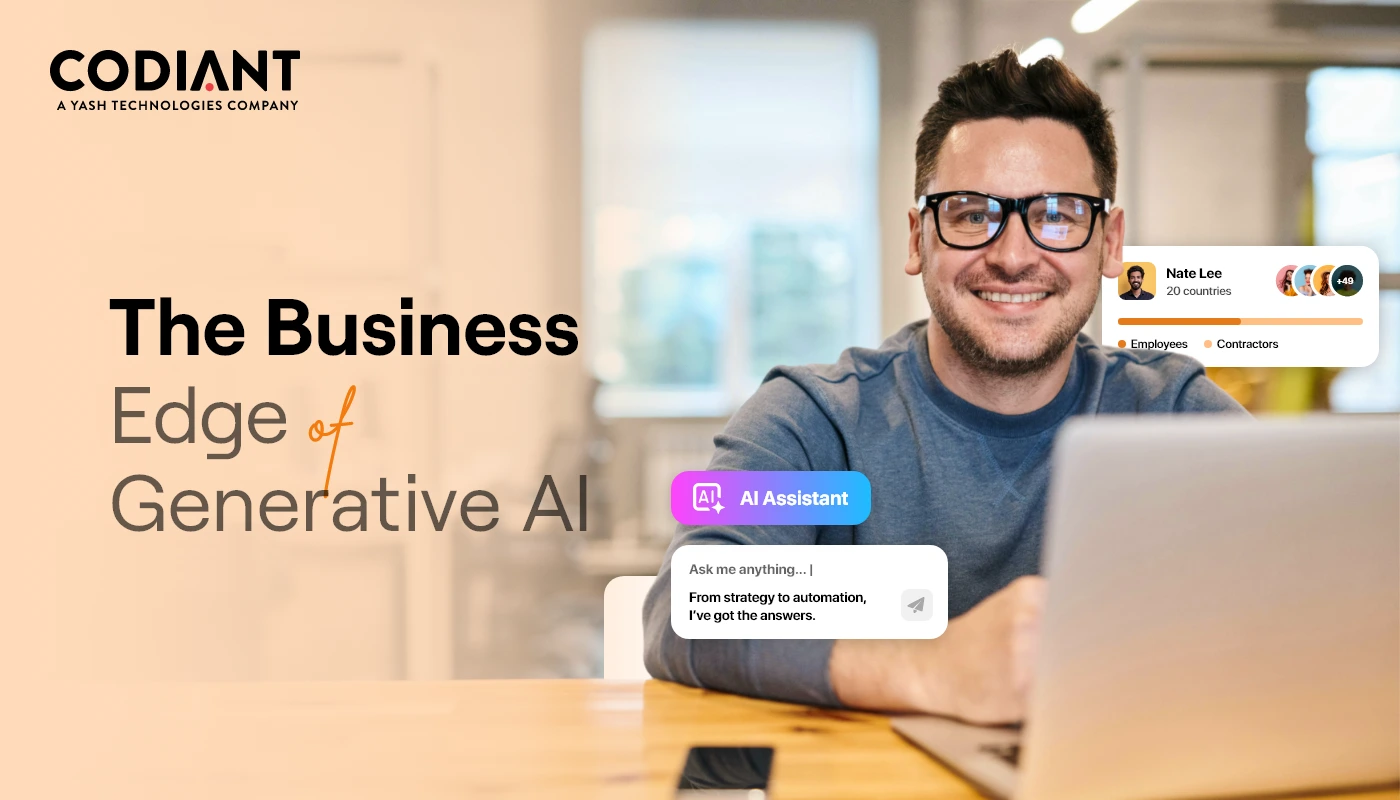
In the last few years generative AI has moved from research labs into everyday business. It is not just a tool for creating art or text. It is now a key driver in how companies are developing digital products.
Building digital products used to take months or even years. Teams had to go through long stages: research, design, coding, testing & then launch. Every step needed time, people & money. Today, with generative AI development, many of these steps are faster, cheaper & more creative.
This blog explains how generative AI supports digital product development, what the main use cases are & why it brings strong benefits for both startups and large companies.
Why Generative AI Matters in Product Development
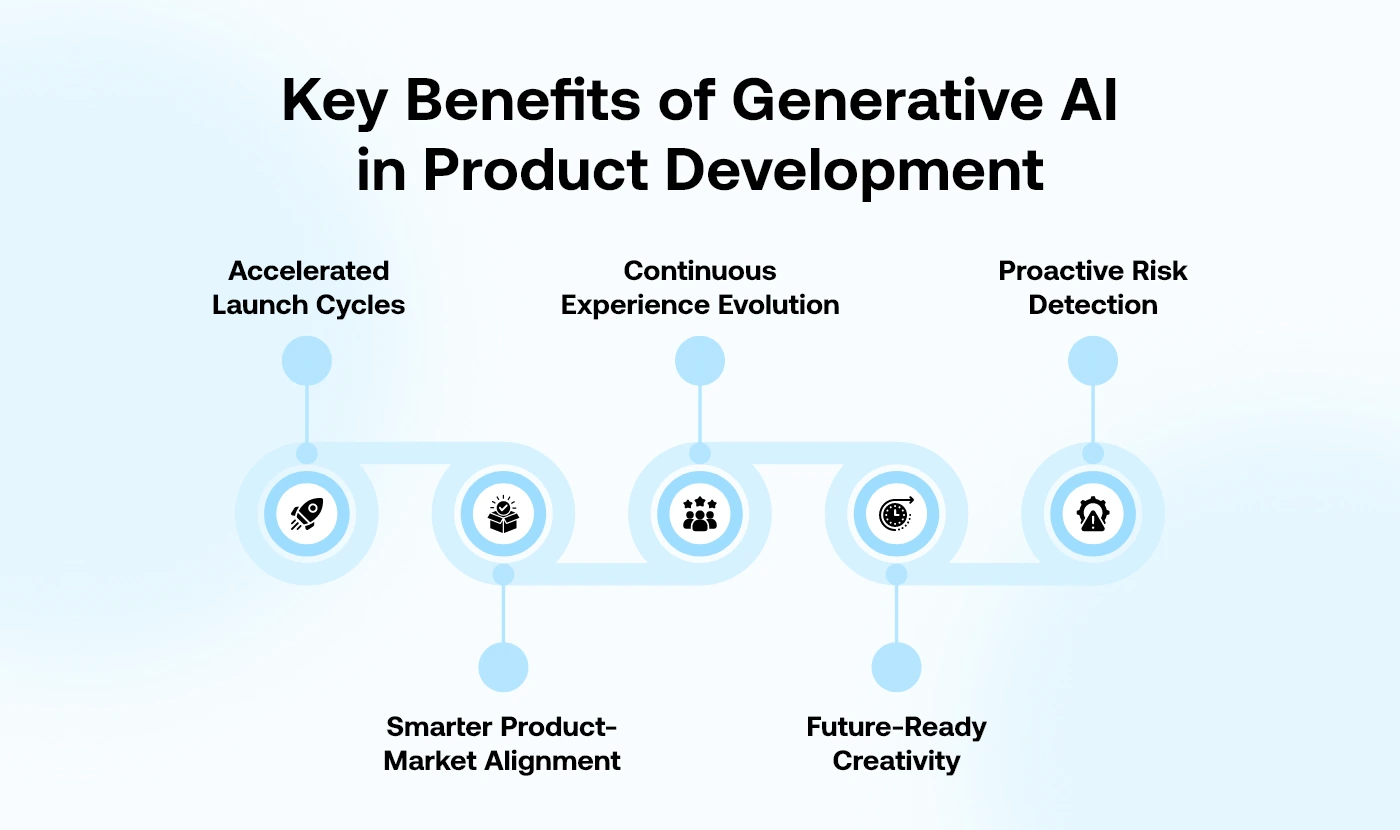
Digital product development is the process of creating apps, platforms, or online tools. It involves idea generation, design, coding, testing & updates. In the past, each stage was done mostly by humans. That meant more mistakes, slower results & higher costs.
Generative AI changes this. It can create design drafts, suggest product features, write and test code & even simulate how users will behave. This makes advanced digital product development faster and more accurate.
For example:
- Instead of waiting weeks for wireframes, designers can generate dozens in hours.
- Instead of writing code from scratch, developers can let AI create the base code.
- Instead of running many tests with real users, AI can simulate thousands of user actions before launch.
Generative AI does not replace people. It supports them. Teams still make the big decisions, but AI reduces the repetitive work.
How Generative AI Helps in Each Stage of Product Development
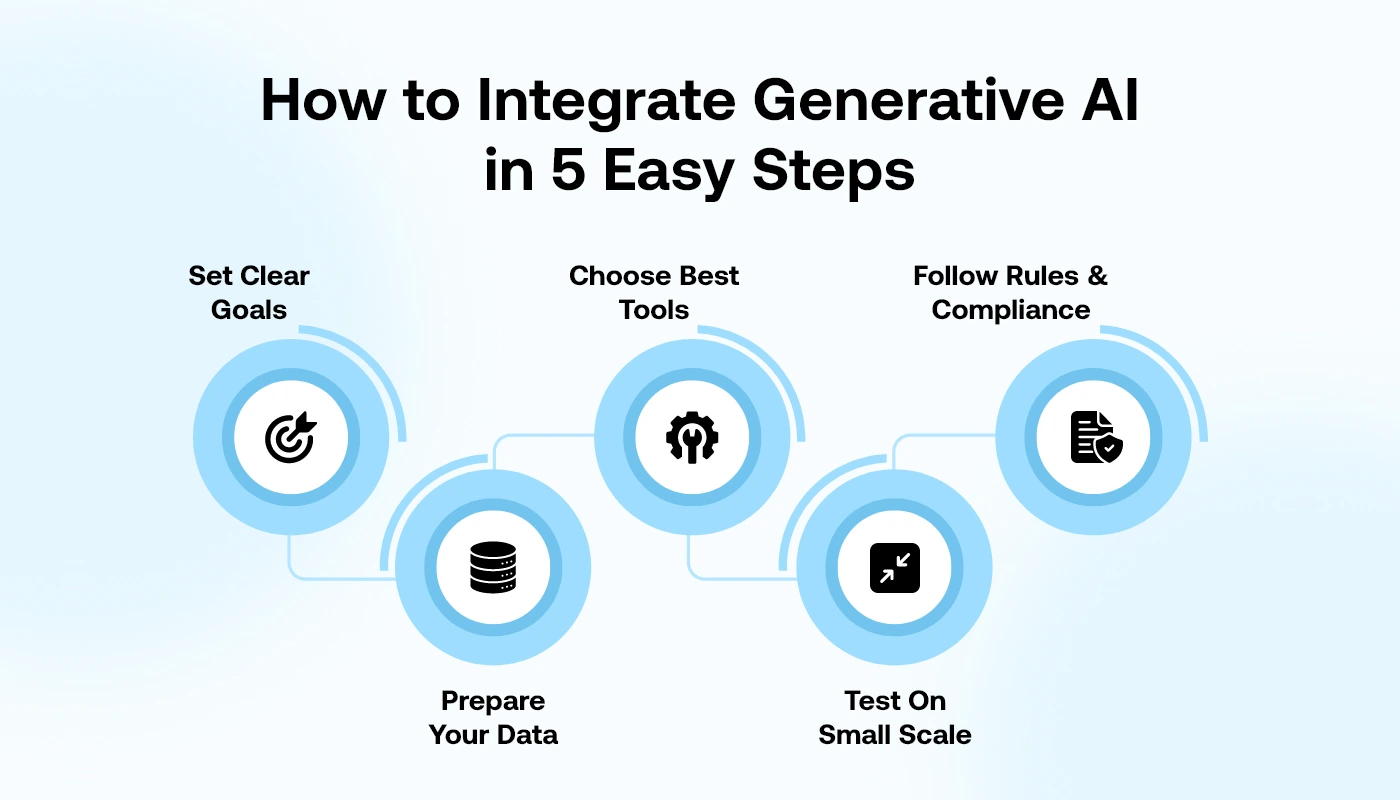
Idea Generation and Validation
The first stage of any product is deciding what to build. This step is risky. Many companies build the wrong thing because they do not know what customers want.
Generative AI can analyze market data, customer reviews & competitor apps. From this, it creates product ideas and suggests which ones are likely to succeed.
Example: A health startup uses AI to scan reviews of fitness apps. The AI finds that many users want stress tracking combined with workouts. This insight helps the team design a unique product before investing months of work.
Design and Prototyping
Design is another area where AI saves time. Designers used to spend weeks creating wireframes and testing layouts. Now they can describe the product in plain language & AI generates multiple screen designs.
This does not mean the AI design is final. It gives a strong starting point. Designers then improve the look, feel & user flow. The result is faster digital product development and more creative options to test.
Code Generation and Developer Support
Writing code is one of the most time-consuming parts of developing digital products. Generative AI tools can now produce code from text prompts. They can also debug errors and suggest improvements.
Developers remain important. They check the code, optimize it & make sure it is safe. But AI handles the repeated tasks like login screens, forms, or dashboards. This saves weeks of work in every project.
Content Creation and Personalization
Every app or product needs content: onboarding text, error messages, push notifications, tutorials & more. Generative AI can create this content quickly. It can also personalize it for each user.
For example, a travel app can send different suggestions to two users. One may get “Top family-friendly beaches,” while another sees “Best solo travel spots.” This type of personalization improves customer satisfaction and loyalty.
Testing and Simulation
Testing is critical in digital product development. Bugs or poor design can ruin a product launch. Generative AI can simulate thousands of user journeys and predict where problems may happen.
This allows teams to fix issues before real users ever see the product. It saves money, reduces risk & improves quality.
Continuous Updates and Scaling
Product development does not end at launch. Products must keep growing. Generative AI helps with continuous improvement. It reviews user feedback analyzes app usage & suggests new features.
For example, if many users search for “eco-friendly hotels” in a booking app, AI can propose a new feature that highlights green travel options. This keeps the product relevant and competitive.
Want to Fast-Track Your Product Journey?
Generative AI can turn months of effort into weeks of progress. By streamlining idea generation, design, coding, and testing, your team gains speed, efficiency, and creative freedom. Here’s what you can achieve:
• Cut development time by up to 70% with AI-driven automation.
• Unlock limitless design variations in minutes, not weeks.
• Improve testing accuracy with simulated user journeys.
• Deliver personalized experiences at scale for every user.
Generative AI Across Industries: Practical Benefits
Generative AI is already powering advanced digital product development across multiple industries. Here are some real-world examples:
Healthcare
Mayo Clinic is testing smart AI tools that help doctors read and sum up a patient’s history in just seconds. A report by Accenture says AI could save the U.S. healthcare system about $150 billion every year by 2026. Generative AI is also helping write treatment notes and create wellness plans made just for each patient.
Finance
JP Morgan made an AI tool called LOXM that helps trade stocks faster and cheaper. It can finish trades in less time than before and lower costs.
Retail
Sephora uses AI tools that let shoppers try on makeup online with virtual try-ons. These tools have made shopping more fun, kept people engaged longer & helped more customers buy the right products. Generative AI also gives personal shopping ideas so people keep browsing and buying.
Education
Duolingo added GPT-4 to its app with a feature called “Duolingo Max.” It can explain answers and even role-play conversations. This shows how AI can give students lessons that fit their needs and provide feedback right away.
Travel
Expedia launched a ChatGPT trip planner that makes personal travel plans for users. People can ask simple questions in everyday language & the tool suggests trips, hotels & activities to book.
Entertainment
Game company Ubisoft is trying AI tools that write dialogue for non-playable characters (NPCs). This saves writers a lot of time and makes games feel more real and interactive.
Read more: Generative AI in Insurance: Benefits, Risks & Use Cases
Benefits of Generative AI in Digital Product Development
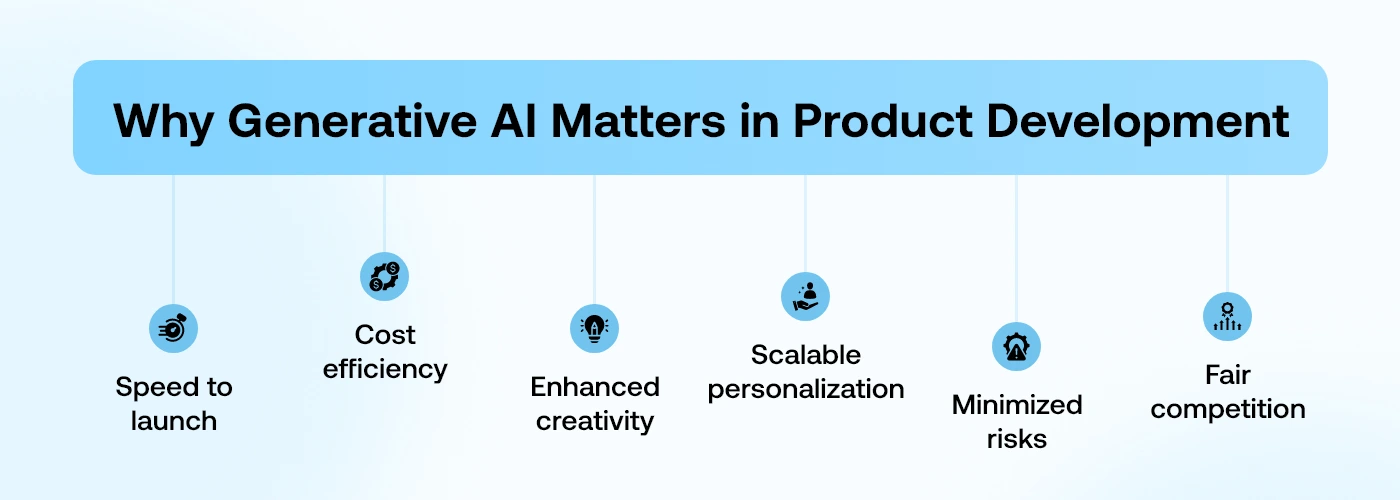
Here are the biggest benefits of using AI app development in product teams:
Faster Time to Market
Products that took six months to build can now be launched in six weeks. This helps businesses stay ahead of competitors.
Lower Costs
AI reduces the need for repeated manual work. Fewer errors also mean less money spent fixing issues.
More Creativity
AI can produce hundreds of ideas or designs in minutes. Teams can explore more directions and choose the best.
Personalization at Scale
Generative AI can adjust apps and products to each user. This increases engagement and retention.
Reduced Risk
By simulating thousands of user journeys, AI finds weak points before launch. This lowers the risk of failure.
Equal Opportunity
Even small startups can now compete with large companies. AI gives them access to tools that were once too expensive.
Challenges and Risks
Generative AI also comes with challenges.
- Bias: If the AI is trained on biased data, the product may give unfair results.
- Privacy: Apps using personal data must follow laws like GDPR or HIPAA.
- Over-reliance: If teams depend only on AI, products may lose the human touch.
Good digital product development means using AI with human oversight. AI should support, not replace, human decisions.
The Future of Generative AI in Product Development
The use of generative AI in digital product development is only beginning. In the coming years, AI will not just support teams but become a central part of how products are created and improved. Here are four key directions to watch:
1. AI-First Startups
New startups will be built with AI at the core. Instead of adding AI later, they will use it in every stage idea testing design, coding & scaling. This will allow very small teams to compete with larger companies by moving faster and keeping costs low.
2. Multimodal Generative AI
Most AI today focuses on one thing at a time, like text or images. Future AI systems will combine many modes text, images, audio, video 3D models & even code into one workflow. For product teams this means they can design an entire app or game with connected visuals, sounds & features in a single process.
3. Dynamic and Adaptive Products
Products will no longer stay the same after launch. With AI and a machine learning service, they can change in real time. For example, a learning app could adjust lessons daily based on how fast a student learns. A fitness app could update workout plans instantly if it notices a drop in user activity. In today’s competitive digital landscape, innovation lies in creating products that adapt, learn, and evolve with every user interaction.
This new era of intelligent design goes beyond static features—it’s about crafting experiences that feel intuitive and alive. By leveraging AI product details, businesses can deliver personalized, data-driven functionality that anticipates user needs and enhances engagement across every touchpoint.
4. Human-AI Collaboration
AI will not replace human creativity or strategy. Instead, humans & AI will work more closely together. AI will handle execution like generating code running tests or creating designs while humans focus on vision empathy & decision-making. This balance will make development faster but still thoughtful.
Read more: How Much Does It Cost to Build an AI Solution in 2025?
Wrapping Up
Generative AI is reshaping how digital products are built—streamlining everything from idea generation to personalization. Startups gain speed and agility, while enterprises stay ahead in fast-changing markets.
To turn these innovations into real-world solutions, many businesses are partnering with a trusted AI development company in UK for smarter, faster execution.
The message is simple: companies that adopt generative AI development today will lead tomorrow. Those that wait may find themselves left behind.
Ready to Build Smarter Products with Generative AI?
Unlock faster, cost-effective digital product development with Codiant’s AI expertise. Let’s make your idea real.
Frequently Asked Questions
It is AI that creates content, design, or code. It helps in idea generation, prototyping, coding, testing & personalization.
No. It works as a support tool. Humans still bring creativity, judgment & strategy.
AI creates wireframes, writes base code, simulates user tests & generates personalized content. This reduces months of work to weeks.
Healthcare, finance, retail, travel, education & entertainment are seeing strong results.
Bias, privacy issues & over-automation. All need human checks and governance.
No. Startups also benefit. AI gives small teams the power to build and scale quickly.
Featured Blogs
Read our thoughts and insights on the latest tech and business trends
How AI Reduces Patient Wait Times by 50% in UAE Hospitals
- January 6, 2026
- Artificial Intelligence
In a Nutshell AI helps UAE hospitals reduce patient wait times by up to 50% using smart triage, predictive scheduling, and automated patient flow management. Emergency departments benefit from faster severity scoring, load balancing, and... Read more
Integrating NLP Into Your Existing App: From Text Analytics to Conversational Interfaces
- December 29, 2025
- Artificial Intelligence
Natural Language Processing has moved from a niche capability to an essential part of modern software, and 2025 has clearly shown its impact. Businesses are no longer rebuilding entire systems to keep up with user... Read more
How to Build an AI-Powered Queue Management System in Dubai, UAE
- December 25, 2025
- Artificial Intelligence
Dubai has been steadily moving toward faster, more efficient public and private services, and this shift has increased the need for systems that reduce waiting time and improve customer flow. With rising footfall across government... Read more

